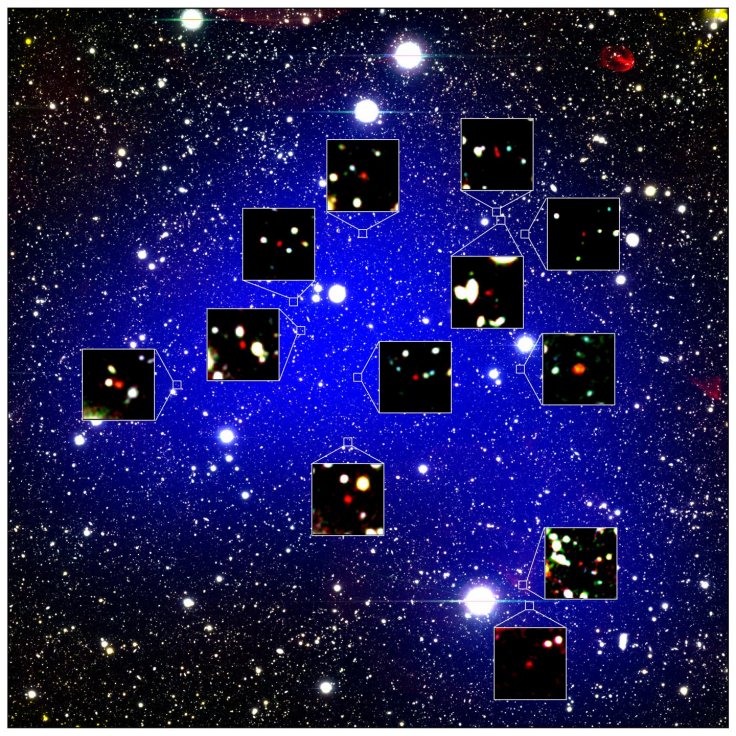
A 'protocluster', or a galaxy cluster that goes back 13 billion years is the oldest that has ever been detected. As scientists aver that the universe was "born" 13.8 billion years ago, the cluster gains importance as it might contain clues about how the universe developed.
The protocluster is a group of 12 galaxies. It is also a progenitor of clusters, which contain hundreds of galaxies and gives an insight into their formation.
The current discovery seems to indicate that giant cosmic structures happened to be part of the universe in its initial phases, or when the Universe was only about 800 million years old, which works out to only 6% of its current age, according to the National Institutes of Natural Sciences in a press release.
Just detecting a protocluster is difficult, says Yuichi Harikane, researcher and leader of the global team, JSPS fellow at the National Astronomical Observatory of Japan. He pointed out that it is "a rare and special system with an extremely high density."
The Subaru telescope in Hawaii enabled the scientists to "map a large area of the sky" and discover in 2009 a huge gas cloud Himiko, which was also the name of a mythological Japanese queen.
The Keck, and Gemini Telescopes were also used recently to detect 12 galaxies. Even though it is "reasonable" to detect a protocluster near a giant object, the global team, led by a scientist from the National Astronomical Observatory of Japan said that it was "surprised" to see that Himiko was "on the edge 500 million light-years away from the center," according to co-author Masami Ouchi. The team is not clear as to why Himiko was not in the centre.
Interestingly, even the mythological queen Himiko is said to have lived in isolation, away from her family. By finding out more about the protocluster, the links between clusters and huge galaxies would become clearer, said Ouchi.
The research was conducted by scientists from Imperial College London. The study was published on September 30 in Astrophysical Journal.
Last year, using the Atacama Large Millimeter/submillimeter Array (ALMA), scientists have uncovered a startlingly dense concentration of 14 galaxies that are poised to merge and offer astronomers an unprecedented opportunity to study the first steps of cluster formation less than 1.5 billion years after the Big Bang.









